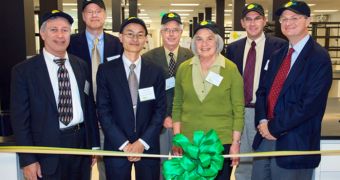On Thursday, June 2, a large crowd gathered in the Aquatic Park section of the US Department of Energy's (DOE) Lawrence Berkeley National Laboratory (Berkeley Lab), where it participated at the inauguration of the Joint Center for Artificial Photosynthesis (JCAP)-North facility.
The new installation joins the Pasadena, California-based JCAP-South facility. Both groups are being sponsored by a $122 million, 5-year Energy Innovation Hubs program, which is funded by the DOE.
The goal of the two facilities is rather simple – collaborate to emulate the natural process of photosynthesis, while at the same time improving it several times over. Another objective is to have new technologies based on these innovations on the market as soon as possible.
Creating a solar-fuel technology that is based on the process through which plants absorb and convert sunlight into energy would bring about a new era in renewable energy. The DOE wants to achieve these capabilities using abundant materials, and cheap manufacturing techniques.
The joint JCAP facilities will have to reach ten times the efficiency of normal photosynthesis, experts explained at the inauguration ceremony. “We’re here today to celebrate a major milestone for artificial photosynthesis,” Peidong Yang, the director of JCAP-North, said at the ceremony.
“JCAP is a very important waypoint on the road to national energy security and economic prosperity,” added Berkeley Lab director Paul Alivisatos, who is in charge of overseeing the new installation.
When fully operational, the research center will accommodate as much as 100 scientists and support staff, inside a massive, 18,000-square-foot structure. “Since we all think we’re smarter than plants, we should be able to utilize photosynthesis too,” Nathan Lewis said half-jokingly.
The chemist is the George L. Argyros Professor at the California Institute of Technology (Caltech), in Pasadena. Caltech manages the JCAP Energy Innovation Hub multi-institutional partnership.
Using mixtures of water, carbon dioxide and sunlight, researchers hope to soon be able to replace gasoline, diesel, coal and natural gas as power sources for our civilization. This makes sense from a statistical perspective.
Each single hour, the Sun bathes Earth in enough energy to last the entire human population for more than a year. Harvesting a small portion of this potential could therefore lead to numerous savings when it comes to fossil fuel use.
“Knowing we have the support of our state and local communities has been and will continue to be critical to JCAP’s success. DOE has also been behind us from the beginning with incredible support,” Lewis explains.

 14 DAY TRIAL //
14 DAY TRIAL //